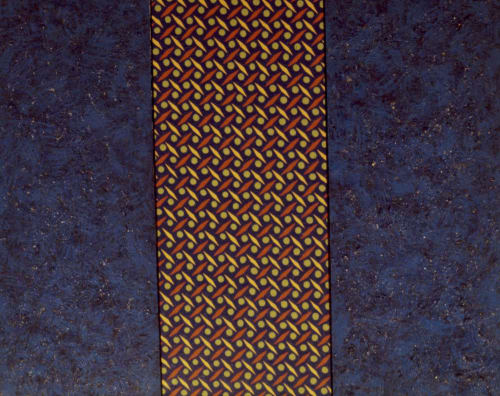James Little in Afro-American Abstraction: MoMA PS1 | NYC
This is the world I want to live in,” thought artist Lorraine O’Grady while attending the opening of Afro-American Abstraction at P.S.1 in 1981. “I found myself surrounded by 200 black people who were thinking about things the way I was.” Guest-curated by art critic April Kingsley, Afro-American Abstraction drew connections between the work of 19 black contemporary artists, the modernist tradition, and the legacy of abstraction in African aesthetics. The exhibition came during “a tough time for black artists,” as one contributor, James Little, later related. “There literally was nothing going on and [Kingsley] helped us enormously.”
According to Kingsley, the works on view shared traits including “a bold physicality, rhythmical vitality, and textural richness, as well as a tendency to use linear, geometrical imagery, and high-energy color.” The latter tendencies were on display in Little’s painting Challenge of the Will (1979), which sports a vibrant geometric pattern in seeming reference to West African textiles. Works of “bold physicality” and “textural richness” included Maren Hassinger’s now-iconic Leaning (1980), bundles of wire-rope installed on the floor and tilted at various angles; David Hammons’s installation Victory Over Sin (1980), in which dark human hair affixed to the tips of reeds populated a room like cattails, or were fixed to the floor at both ends to form semicircular loops; and nine steel sculptures composed of nails, chains, and other parts from Melvin Edwards’s seminal Lynch Fragments series (1963–), which were hung at eye level on two walls.
Of the artists featured—Barbara Chase-Riboud, Howardena Pindell, and Martin Puryear, to list a few—many were already well known, while others would rise to fame in years to come. Many of the featured artists would be celebrated in the exhibition Now Dig This! at MoMA in 2013.
— Curatorial text courtesy MoMA PS1











